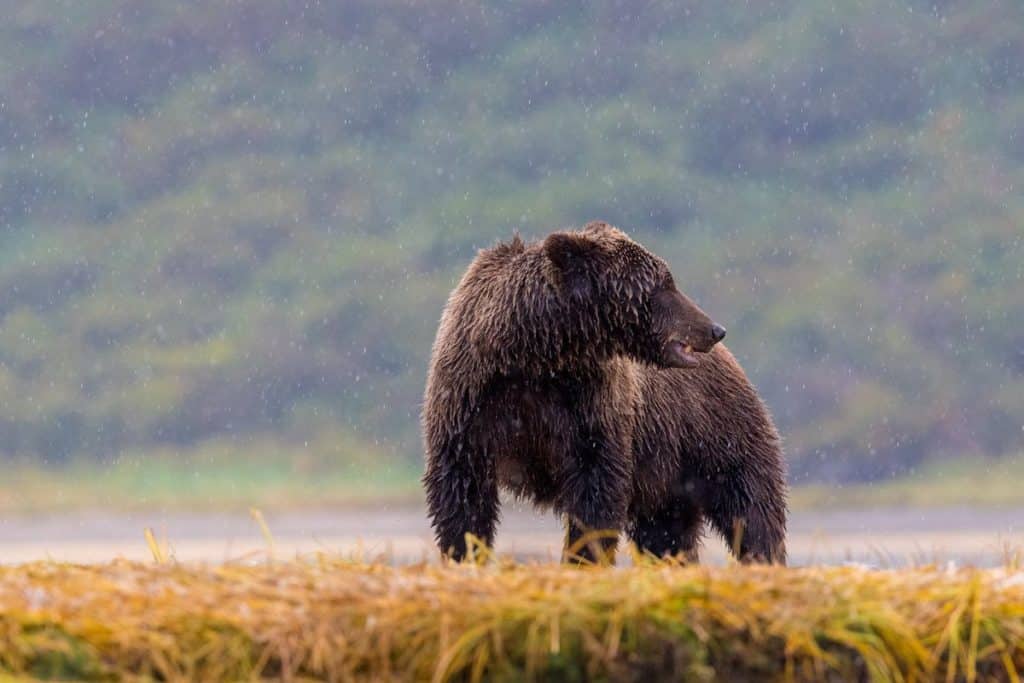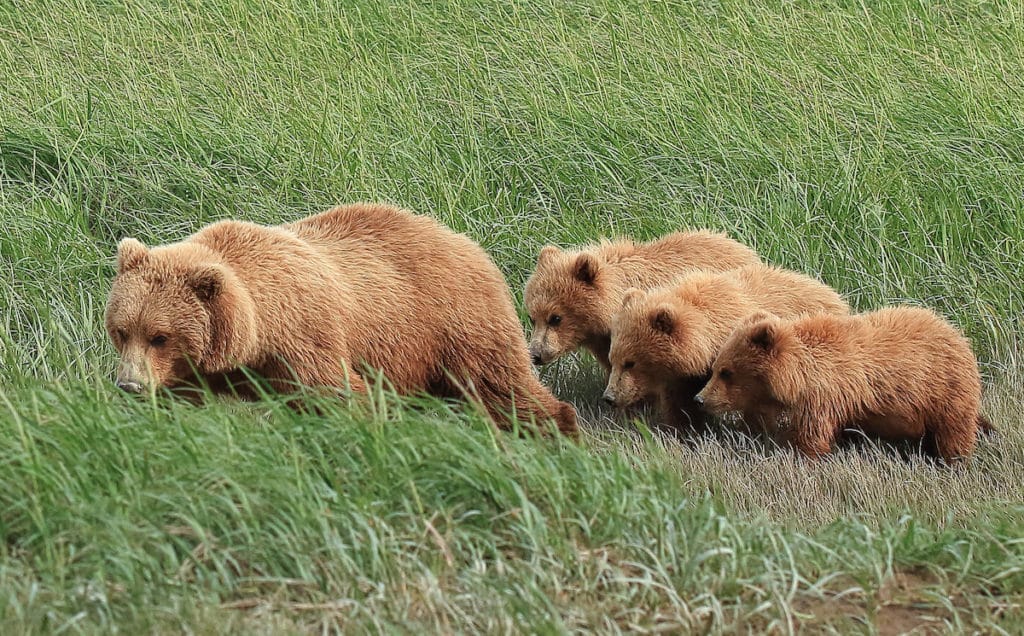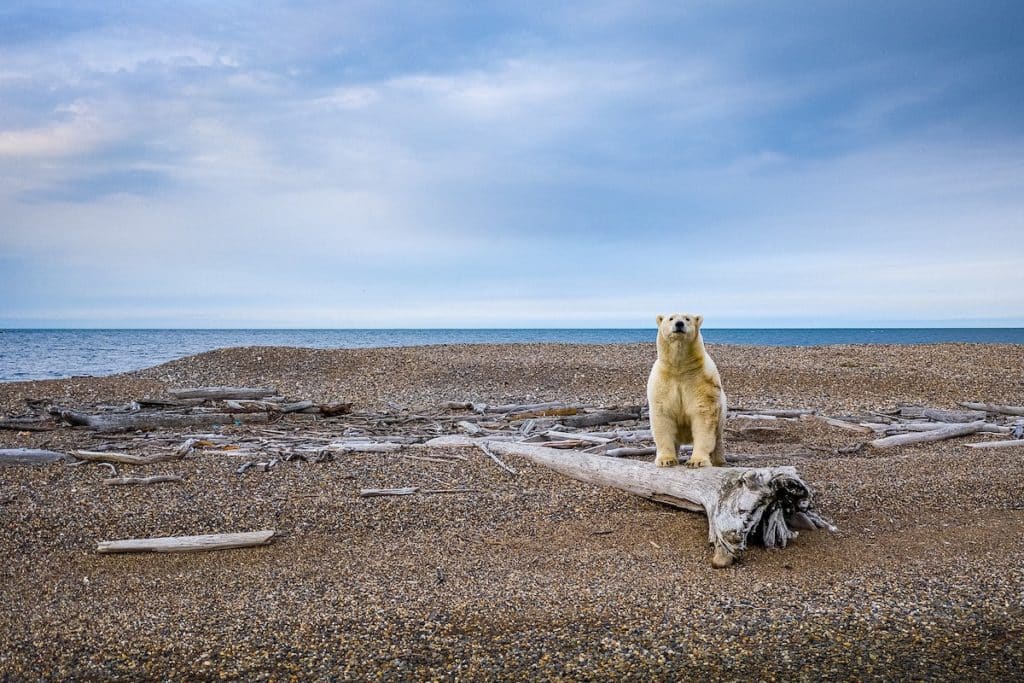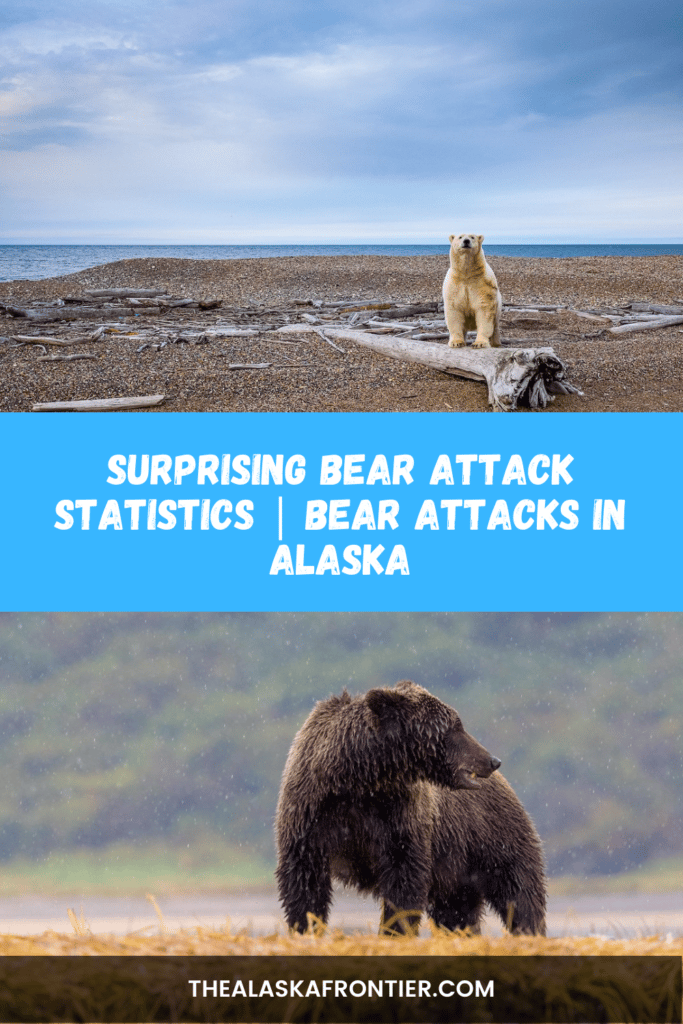Dangerous bear encounters are on the rise in states like Wyoming, Montana, and Colorado as bear populations thrive. Some of these encounters lead to attacks and fatalities.
In some states, grizzly populations are growing rapidly due to state and federal protection. Almost 70% of bear attacks are preventable and are caused by humans.
According to a study by Alaska News Source, Alaska is accountable for roughly 29% of all fatal bear attacks in the United States. There are multiple bear encounters in Alaska every year. Most of these encounters do not lead to attacks.
In this article, we are addressing the most asked questions on the internet about bear attack statistics and specifically bear attacks in Alaska. We will also address some statistical differences between black bears, grizzlies, and polar bears. Some of the statistics are surprising.

Why Do Bears Attack Humans?
Most bears try to avoid people, but become very curious. Sometimes their curiosity brings them into close contact with humans and they become aggressive. Bears also become very protective of cubs and food. A mixture of the two provides a hazardous situation for hikers and outdoorsmen.
It is very rare for a bear to hunt humans as prey. In situations like this, the rogue bear is often exterminated to protect humans in that area. Multiple bear attacks have been recorded for other reasons as well.
Bear encounters do not always become bear attacks. Most encounters end with the viewer having a pleasant and exciting experience watching bears do what they do. Only a few encounters become dangerous.
What Is The Chance Of A Bear Attack?
According to the National Park Service, the chances of a bear attack are 1 in 2.1 million, and that is a conservative number. It is extremely rare to be attacked by a bear.
Two main factors increase your chances of being attacked: Food and cubs.
Food
Bears become very protective of their food. If you are in an area where a bear has killed an animal or claimed a food source, it is a high-danger area. This could be a blueberry patch or an animal it killed. Traveling in bear country is challenging because we do not know where these areas are until we are there.
Many bear mauling victims are hunters who legally harvested a game animal, but were attacked while hauling the meat out of the woods. Bears are opportunistic and become dangerous when they are hungry.
Cubs

Mother bears are very protective of their cubs if they sense that they are endangered. If you see a bear with cubs from a distance leave them alone.
Take your photos from a safe distance and leave the area. Almost 50% of bear attacks occur because a mother bear attacked in defense of her cub(s). And 70% of fatal bear attacks are because of mother bears being protective of their cubs.
Mother bears are most dangerous when people walk between them and their cubs.
How Worried Should I Be About Being Attacked By A Bear?
As was said earlier on in this article, bear attacks are extremely rare all across the United States. It is still important to be alert when you are in bear country, especially in Alaska.
If you stay alert and purposefully give bears a respectful distance, you should not be overly concerned. It is unlikely to encounter a bear during the winter because bears hibernate.
Statistically, the months of May through October are the most dangerous for bear attacks in Alaska.
During spring and fall, bears try to put on a significant amount of weight to recover from and prepare for winter.
Bears may become desperately protective of their food during this time, an extra amount of caution should be used. Additionally, June and July is a bear’s breeding season. Bears will cover a lot of ground during this time of the year seeking a mate.
Where Are Bear Attacks Most Common?
Alaska makes up over 29% of bear attacks in the United States. This makes Alaska the most likely state to be attacked by a bear.
Most bear maulings occur in remote areas of Alaska. These are normally caused by a bear trying to claim an animal that a hunter harvested.
Bears become protective of the harvested animal and end up mauling hunters.
In areas of Alaska with high bear densities, bears have learned that the shot of a rifle means fresh food. This is why it’s so important to be alert, especially as a hunter.
Bear sightings and encounters are rare in town. Like any other bear encounter, the bear should be treated with respect and given appropriate space.
How Many Fatal Bear Attacks Are There Per Year In The United States?
From 2020-2022 there were 6 fatal grizzly bear attacks and 2 fatal black bear maulings.
In Alaska, the current average of hospitalization by bear attack is 3.8 a year.
- 20% of bear attacks do not end with the individual(s) admitted to the hospital.
- 40% of fatalities occur after the injured victim is admitted to the hospital, that means 60% of deaths occur before the victim can get to medical care.
In addition to this, some dangerous bear encounters are not reported. Multiple times a year people will experience being charged by bears, but do not receive injuries.
Dangerous bear encounters and attacks have been on the rise over the last few years. This is attributed to more human intrusion on bear habitat.
Lack of personal awareness is an unrecognized and likely factor in many of the recent bear attacks.
If you compare bear attacks with other causes of death, it looks like your chances of dying by a bear, even in Alaska are very slim.
The table below may shed some light on how rare bear attack deaths are compared to other causes of death. These numbers are the average over years of data. Some years may have a higher number of deaths than others.
You will see that bear attack deaths are an average of 1 per year. Some years may have multiple deaths such as in 2021 there were 6 reported. 2022 had 2 deaths and so far in 2023* there have been 2 deaths by polar bears in Alaska.
You can view these bear deaths by year here.
| Cause Of Death | Number Of Deaths Per Year |
|---|---|
| Heart Disease(1) | 697,000+ |
| Vehicle Accidents(2) | 42,900 |
| Drowning(3) | 4,000 |
| Hypothermia(4) | 1,330 |
| Hornet/Bee/Wasp Stings(5) | 62 |
| Snake Bites(6) | 5 |
| Bear Attacks(7) | 1 |
Grizzly Bear Attack Statistics
It is estimated that grizzly bears are 20 times more dangerous than black bears. In reality, grizzly bear attacks lead to twice as many deaths as black bear maulings.
Nationwide, someone who is mauled by a Grizzly is twice as likely to die as someone attacked by a black bear.
Alaska Grizzly Bear Attack Statistics
In Alaska on the other hand, you are equally as likely to die from a grizzly attack as a black bear.
One bear species is not more lethal than the other after an attack. 15% of attacks, both black bear and grizzly, lead to fatalities.
Even though you are equally as likely to die from a black bear mauling as you are from a grizzly, someone is 2.47 times more likely to be mauled by a grizzly.
Of the 66 attacks recorded from 2000-2017, 47 were caused by grizzly bears leading to seven fatalities.
In 2021 a man was repeatedly terrorized by a grizzly in a remote area outside of Nome Alaska for several days before being rescued by aircraft. Hungry grizzly bears are relentless.
Black Bear Attack Statistics
Grizzly bears get all the glory for their ferocity, but black bears should not be messed with.
Over the last 109 years, 66 people have been killed by black bears in the United States. 92 percent of deaths have been caused by males (boars). 88 percent of fatal encounters occurred because the bears actively pursued the victim as prey.
From this data, we can conclude that a mother black bear is not as dangerous as a mature boar.
Many times “bluff” charges have been recorded. Mother bears will pretend to charge to scare off people that have come too close to their cubs. This rarely turns into a fatal encounter but is dangerous nonetheless.
Alaska Black Bear Attack Statistics
In Alaska, two people were killed by a black bear in 2017. One was a 16-year-old male runner killed in the popular annual trail race “Robert Spurr Memorial Hill Climb.”
The other was a 27-year-old woman collecting geological samples five miles from Pogo mine near Delta Junction in east central AK. Her friend was also seriously injured. In both instances, the bears were hunting the victims as prey.
Out of the 10 deaths by bear attacks recorded in Alaska from 2000-2017 three of them were by black bears. There were 19 black bear attacks during that 17-year period. 15% of the attacks lead to human death.
Black bears have been known to come into tents to get food.
In 2022 four black bears were killed by the Alaska Department of Fish and Game after they entered tents at Centennial Campground in Anchorage. Black bears are very curious which gets them into trouble.
Polar Bear Attacks Per Year

Polar bears are by far the most lethal bear to be attacked by.
Did you know you can take a tour to see polar bears in Alaska?
Their mauling fatality rate is just over 27%. Alaska experienced 30 years without a fatal polar bear encounter up until January 2023 when a young mother and her child were killed. There are concerns, as the earth goes through heating and cooling phases, that polar bear attacks will become more common. This remains to be seen.
Over 144 years only 73 polar bear attacks were reported in Alaska, Russia, Greenland, Norway, and Canada combined.
Out of the 73, 20 of the attacks resulted in deaths. Polar bear interaction with humans has been limited, but is expected to become more frequent in the coming years.
How Many Fatal Bear Attacks In Alaska Each Year?
Alaska averages a fatal bear attack once every other year. In reality, there are sometimes multiple years without bear attacks that lead to death.
As stated previously, Alaska makes up over 29% of the recorded fatal bear attacks in the United States.
In the years 2000-2017, Alaska had 10 fatal bear attacks. A teen was killed by a black bear in 2021. In 2022 a man was killed by a brown bear and multiple hunters were mauled including a 9-year-old boy. A polar bear caused two fatalities in January 2023. Alaska averages 3.8 bear hospitalizations yearly.
What Can You Do To Prevent A Bear Attack?
So with all this talk about bear attacks and fatalities, how do you prevent being mauled? There are multiple methods of defense.
The ways that we cover are common sense issues that are regularly neglected.
1.) Pay Attention
Over 70% of bear attacks are caused by people that are not treating them with respect. When people get too close, whether they realize it or not, the likelihood of an attack increases.
This is why it is so important to pay attention to your surroundings when you are hiking or spending time outdoors.
In Alaska, it’s extremely important to be bear aware when hiking in the wilderness. If there are bear sightings near a trail, notices will be put up about bear activity in that area.
2.) Make Noise
Most bears do not want to hang around if they know a human is in the area. People will regularly hang bells on their backpacks to help warn bears so they can move off before coming into sight. Talking in a loud voice will also deter bears.
3.) Give Bears Enough Space
If you see a bear from a distance, resist the temptation to get close. Photos are great, but so is having all your limbs. The key to staying safe with bears is respect. If you respect their need for space you will be much safer.
4.) Stand Your Ground
Bears are like dogs, they will chase something that is running away from them. Except with a bear, it is not a playful chase, it is a predatory chase.
When a bear sees you run, it may think you are prey. The best option is to slowly move away while staying alert and watching for other bears.
If a bear charges you, stand firm and make yourself look as big as possible.
You will never outrun a bear. Grizzlies can run 35 miles an hour and healthy black bears reach speeds close to 30mph. Both black bears and grizzlies will climb trees so avoid that method of escape as well.
5.) Bring Bear Spray
If you are hiking here in Alaska, you can pick up a can or two of bear spray. Bear spray should be used as a last resort, but used when necessary. This spray will cause a bear to run away, giving you enough time to get out of the area.
Bears are very capable and amazingly strong animals. It is important to realize and respect their capabilities as apex predators. Bears are not likely to attack people but are capable of causing great injury. If you are going to spend time in bear country make sure to stay alert.
Before you go…
It is good to study how to defend yourself from a bear attack. The National Park Service has a list of what to do if you encounter a bear in the wild.
The best way to have a safe experience around bears is attack prevention! Stay safe and alert and enjoy the outdoors. Remember your odds of being attacked are well under 1 in 2 million.

Evan Grimm is a freelance writer based in Fairbanks Alaska. He is a husband, father, certified pilot, and committed outdoorsman. He runs a digital marketing business that serves service-based businesses and is heavily involved in non-profits helping people in remote places of Alaska with construction and mechanical services.
